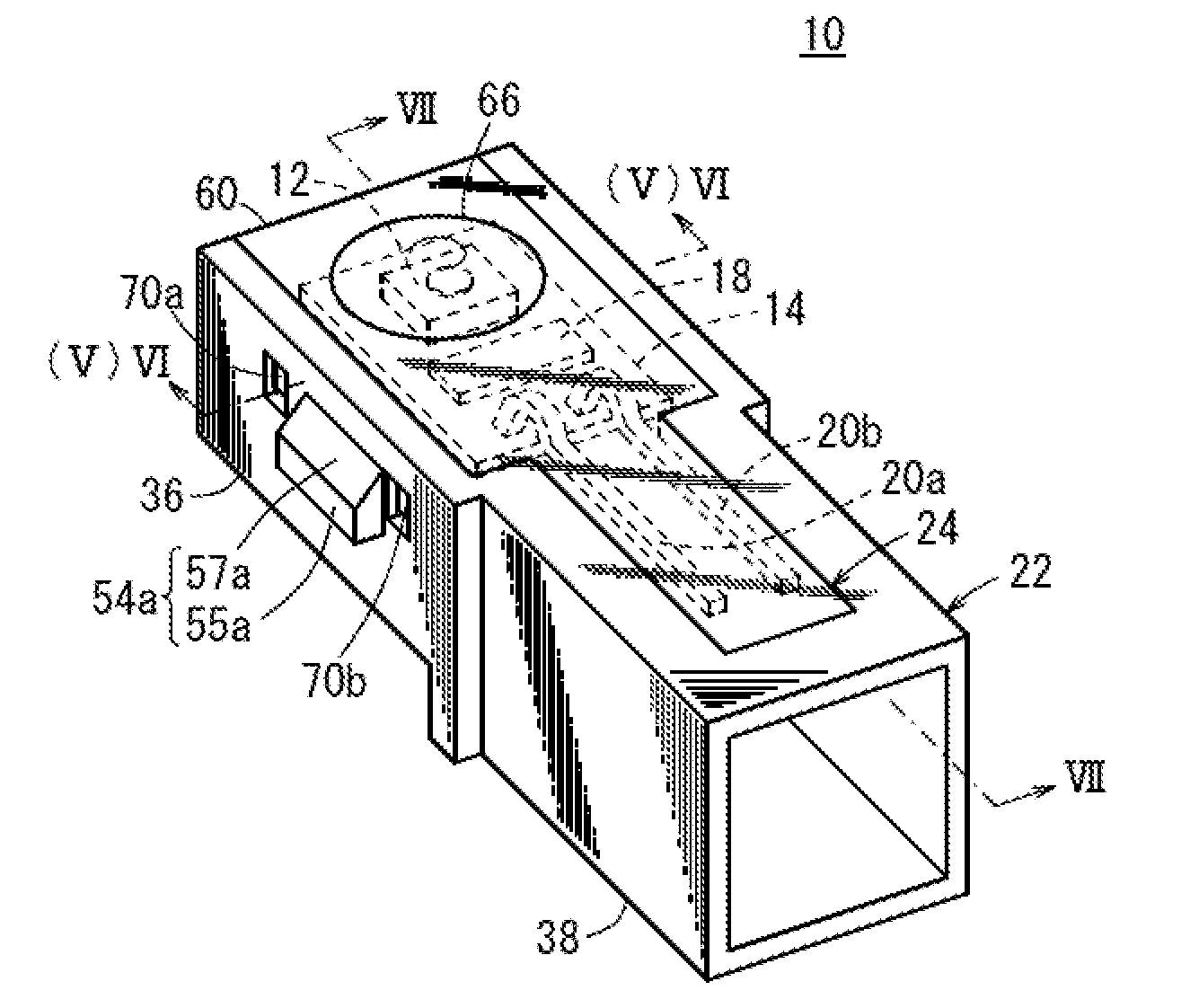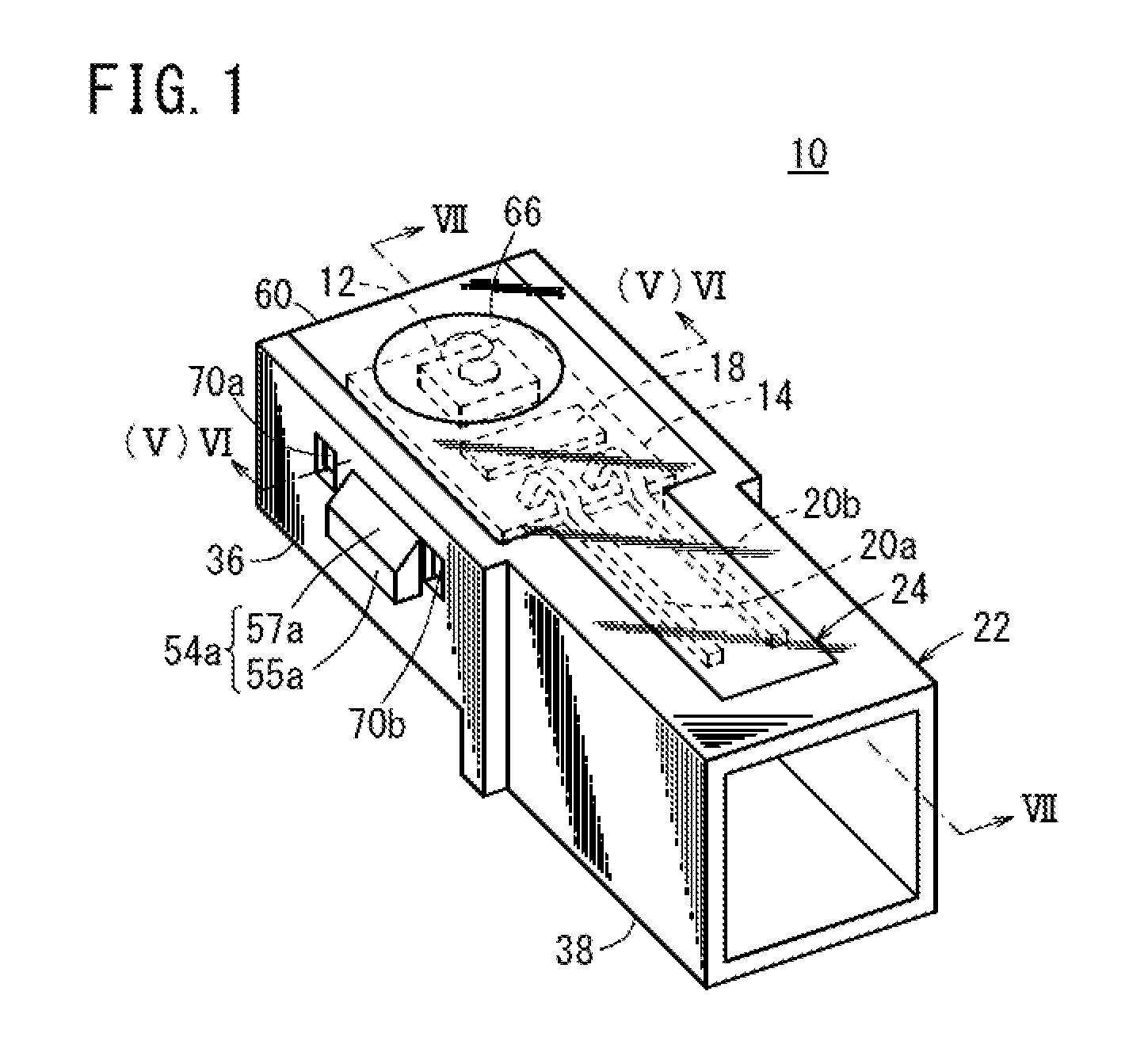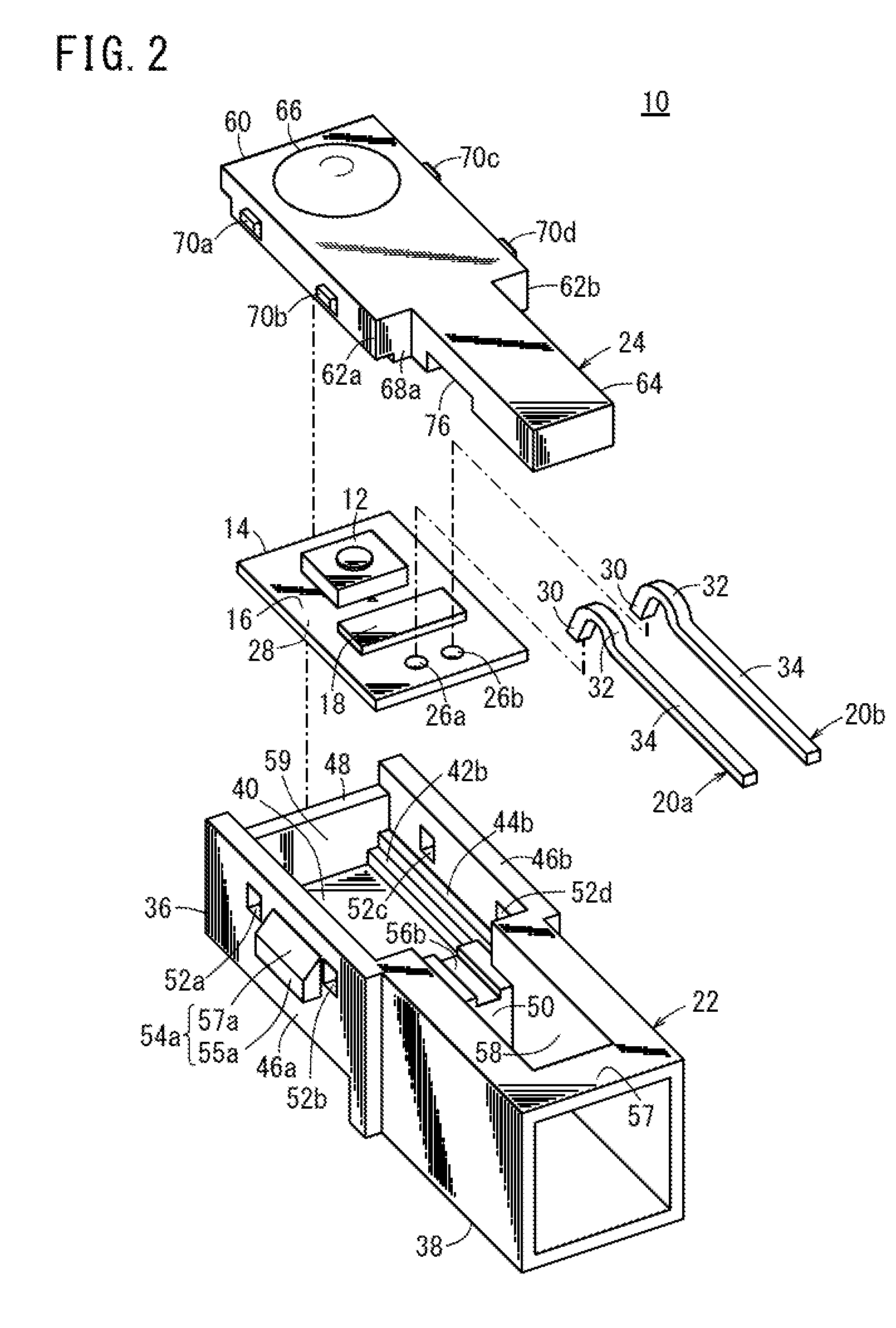Light-emitting device
a technology of light-emitting devices and light-emitting tubes, which is applied in the direction of instruments, lighting and heating apparatus, fibre light guides, etc., can solve the problem of not being disclosed, and achieve the effect of increasing the rigidity of the light-emitting tubes
- Summary
- Abstract
- Description
- Claims
- Application Information
AI Technical Summary
Benefits of technology
Problems solved by technology
Method used
Image
Examples
first modification
(First Modification)
[0131]A light-emitting device 10A according to a first modification will be described below with reference to FIGS. 9 through 16. In the present modification, parts which have identical or similar functions and effects to those according to the above embodiment are denoted by identical reference characters, and will not be described in detail below. This holds true for a third modification and a fourth modification to be described later.
[0132]As shown in FIGS. 9 through 11, the light-emitting device 10A according to the first modification has a cover 78 instead of the cover 24 of the light-emitting device 10 described above. The cover 78 is integrally formed of resin or the like by injection molding, and has a tubular portion 80 integrally formed with a main cover body 77 and in which a light guide body (light guide) 79 can be mounted.
[0133]The tubular portion 80 is substantially in the form of a hollow cylinder positioned near one end of the main cover body 77. ...
second modification
(Second Modification)
[0157]A light-emitting device 10B according to a second modification will be described below with reference to FIGS. 17 and 18. In the present modification, parts which have identical or similar functions and effects to those according to the first modification are denoted by identical reference characters, and will not be described in detail below.
[0158]As shown in FIGS. 17 and 18, the light-emitting device 10B according to the second modification has a cover 100 and a light guide body 102 which are different in structure from the cover 78 and the light guide body 79 described above. Specifically, the cover 100 has a tubular portion 104.
[0159]The tubular portion 104 has a second stopper 106a projecting from an upper end of an inner circumferential surface of the thick region 82a, and a second stopper 106b projecting from an upper end of an inner circumferential surface of the thick region 82c. Each of the second stoppers 106a, 106b is of a tapered shape that is...
third modification
(Third Modification)
[0162]A light-emitting device 10C according to a third modification will be described below with reference to FIG. 19. As shown in FIG. 19, the light-emitting device 10C according to the third modification has a cover 110 which is different in structure from the cover 24 described above.
[0163]The cover 110 has a lens 112 formed thereon and which is of an elliptical shape as viewed in plan. The lens 112 has a major axis extending along the longitudinal direction of the cover 110.
[0164]In the present modification, when the light-emitting device 10C is assembled, the lens 112 is positioned between the mounting tooth 70a and the mounting tooth 70c, and positioned between the fixing finger 54a and the fixing finger 54c. In a case where it is desired to prevent the lens 112 from being displaced in position and to increase supporting rigidity for the lens 112, since the mounting tooth 70a, the mounting tooth 70c, the fixing finger 54a, and the fixing finger 54c are posi...
PUM
 Login to View More
Login to View More Abstract
Description
Claims
Application Information
 Login to View More
Login to View More - R&D
- Intellectual Property
- Life Sciences
- Materials
- Tech Scout
- Unparalleled Data Quality
- Higher Quality Content
- 60% Fewer Hallucinations
Browse by: Latest US Patents, China's latest patents, Technical Efficacy Thesaurus, Application Domain, Technology Topic, Popular Technical Reports.
© 2025 PatSnap. All rights reserved.Legal|Privacy policy|Modern Slavery Act Transparency Statement|Sitemap|About US| Contact US: help@patsnap.com



